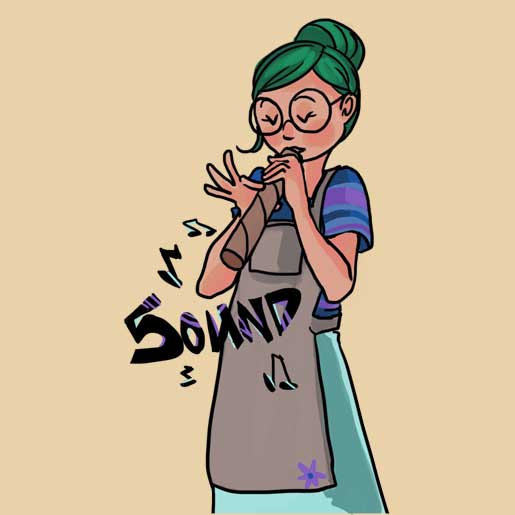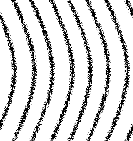

Sound
Two different experiments to help demonstrate some of the physics of sound.
Materials
- 12 plastic 'Easter' eggs
- Small items such as rice, paper clips, marbles, pennies, etc.
- Toilet paper or paper towel roll cardboard inner tube
- Some wax paper
- Rubber band

 Procedure
Procedure
Have one person fill each of the plastic eggs with a different item.
Put some rice in one, some dried beans in another, etc. Keep track of what you
put in each egg by writing numbers on the egg. Have a different person try to
see if they can figure out what is inside each egg by shaking and listening to
the sound generated. After taking a first guess, now show the person the list
of what items are in each egg and have them guess again. See if the person changes
their mind about some of the previous guesses. Now open the eggs and see how close
the guesses were to what was actually inside each egg.

Now, let's make a musical instrument called a kazoo. Cut a small square of wax paper
about one inch larger than the end of the cardboard tube. After doing that, wrap the
wax paper over one of the ends of the tube and put a rubber band over the paper to
hold it in place. Now, put the open end of your kazoo up to your mouth and hum a
tune into it. Notice how the kazoo buzzes and vibrates to amplify (make louder)
the sound of your voice.
 What's Going On?
What's Going On?
Sound is created when the air around us gets pushed quickly (compressed) and
then the push stops. This air compression produces what scientists call a
sound wave. Our ears can detect that wave and through the ear's eardrum,
some small bones, and some nerves, and tells our brain that a sound was just
heard. Our brain can determine quickly all kinds of different sounds.
Notice how just very small differences in the sound that came from the
plastic eggs was just enough for you to figure out what was in each egg.
The sound of our voice seems to be made louder by humming into the kazoo
because the kazoo resonates or vibrates with the sound of your voice.
Your voice is a complex sound wave that contains lots of different sounds
all put together so that it sounds like one sound. Scientists call the
different sounds harmonics, and all those harmonics together is what makes
your voice sound different than someone else's. As your voice travels down
the cardboard tube and reaches the wax paper, the wax paper vibrates and all
those harmonics get amplified (made louder). Not all the harmonics get
amplified the same amount, so the kazoo actually changes the way your voice
actually sounds. When you hum a tune into the kazoo, you get a completely
different sound. Some people call this music, some call this noise.
Mess Factor
No messes this time!
 Things to Remember
Things to Remember
Sound is just air that has been compressed in 'waves'.
Our ears are especially good at detecting those waves (also
called listening). When we hear something, our brain is able
to figure out very quickly, whether we have heard this
sound before, and if not, make really good guesses from where the
sound came. Think about how we are able to do this with our brains.

We, as humans, have created many more sounds than what appear naturally.
Some of these sounds are what we would call music and the music is created in lots of different
ways. Many hundreds (or thousands) of years ago, people found that certain things, such
as a string when held tight and plucked, produced a pleasant sound. Over the years
the people created many musical instruments from that simple idea. Many
other musical instruments came directly from what people saw and heard around them.
They observed nature and learned to imitate the sounds
they heard. See if you can think of some musical instruments that make sounds
something like what is heard in nature.